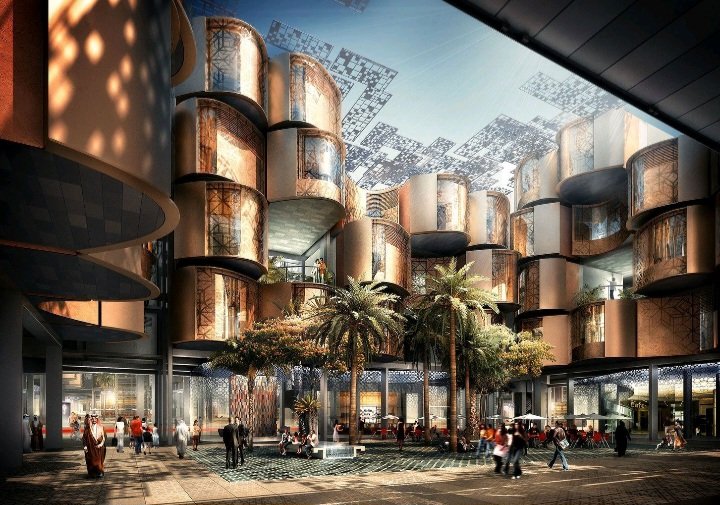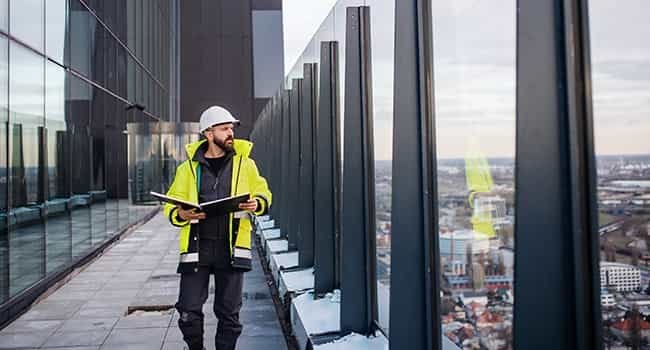By: Eng. Wael Saber Hafez
The surge in mixed-use developments is reshaping urban landscapes globally, reflecting a paradigm shift in how we design and inhabit our cities.
According to a report by the Urban Land Institute, mixed-use projects accounted for roughly 20% of all new urban development in 2020, with this figure expected to climb steadily as urbanization continues to accelerate.
This trend underscores the increasing preference for environments that seamlessly blend residential, commercial, and recreational spaces into cohesive, vibrant communities.
The appeal of mixed-use developments lies in their ability to offer convenience, foster a sense of community, and create sustainable urban living solutions.
The role of facility management in mixed-use environments is vital for several reasons.
Firstly, operational efficiency is paramount in these settings. Facility managers must implement robust systems for managing shared resources such as utilities and common areas, ensuring that all components of the development function seamlessly.
This involves not only routine maintenance but also the optimization of energy use, waste management, and the coordination of services across different sectors.
Secondly, safety and security are critical in mixed-use environments, where high density and diverse populations pose unique challenges.
Facility managers must design and implement comprehensive security strategies that protect both people and property, including surveillance systems, access control, and emergency response planning. By maintaining a secure environment, they help foster a sense of safety and trust among residents, businesses, and visitors.
Understanding Mixed-Use Environments – Mixed-use environments are urban developments designed to integrate various functions, such as residential, commercial, and recreational spaces, within a single cohesive area.
These developments aim to create self-sustaining communities where people can live, work, and play without needing to travel significant distances.
By combining multiple uses within a compact area, mixed-use developments promote efficiency, reduce urban sprawl, and foster vibrant, dynamic neighborhoods.
Examples of Mixed-Use Environments

Masdar City, Abu Dhabi – Designed as a sustainable urban community, Masdar City integrates residential areas, research institutes, business centers, and green spaces.
The city emphasizes renewable energy, waste reduction, and sustainable transportation, aiming to become a model for eco-friendly urban planning.
Mixed-Use Environments Are Becoming More Prevalent
Urbanization and Population Growth – As urban populations grow, cities face increasing pressure to accommodate more people in limited spaces. Mixed-use developments offer a solution by maximizing land use efficiency. They enable higher density living, which can help mitigate the issues of urban sprawl and the environmental impacts of over-expansion.
Sustainability and Environmental Concerns – There is a growing emphasis on sustainable development to combat climate change and reduce environmental footprints.
Mixed-use environments promote sustainability by reducing the need for extensive transportation networks, encouraging walking and biking, and facilitating the integration of green building practices and renewable energy sources.
Economic Viability – Mixed-use developments are economically attractive to developers and municipalities because they can generate multiple revenue streams from residential, commercial, and recreational spaces. This diversification of income can enhance the financial stability and attractiveness of urban investments.
Community and Lifestyle Preferences – People increasingly value convenience and lifestyle quality, favoring communities where they can live, work, and play without lengthy commutes.
Mixed-use environments cater to this preference by offering diverse amenities within walking distance, fostering a sense of community and enhancing the overall quality of life.
Urban Revitalization – Mixed-use developments can breathe new life into underutilized or deteriorating urban areas.
By combining various uses, these developments can attract a mix of residents, businesses, and visitors, spurring economic activity and revitalizing neighborhoods.
The Role of Facility Management

Facility management plays a crucial role in ensuring the success and seamless operation of these complex environments.
Unlike traditional single-use developments, mixed-use projects require a sophisticated approach to management that can address the unique challenges posed by their multifaceted nature.
Facility managers are tasked with maintaining a delicate balance between the needs of residential tenants, commercial businesses, and public amenities.
This involves coordinating a wide array of services, from routine maintenance and security to specialized functions like retail operations and residential services.
Integrated Management Systems – Implementing integrated management systems is essential for streamlining operations across different functions within a mixed-use development.
These systems centralize data and processes related to maintenance, asset management, tenant relations, security, and sustainability initiatives.
By having a unified platform, facility managers can access real-time information, track performance metrics, and coordinate activities more efficiently. Integrated systems also facilitate better communication and collaboration among various teams and service providers.
Proactive Maintenance Programs – Establishing proactive maintenance programs is key to preventing costly repairs and minimizing downtime.
Facility managers should develop schedules for regular inspections, preventive maintenance tasks, and equipment servicing across all components of the mixed-use development.
This includes HVAC systems, plumbing, electrical infrastructure, elevators, fire safety equipment, and building exteriors.
Utilizing predictive maintenance technologies, such as IoT sensors and data analytics, can help identify potential issues before they escalate, optimizing equipment lifespan and operational reliability.
Energy Management and Efficiency – Managing energy consumption efficiently not only reduces operational costs but also contributes to sustainability goals.
Facility managers can implement energy management strategies such as installing energy-efficient lighting systems, optimizing HVAC operations, and integrating renewable energy sources where feasible.
Smart building technologies enable real-time monitoring of energy usage and provide insights for improving efficiency.
Energy audits and benchmarking against industry standards can further identify opportunities for conservation and cost savings.
Effective Space Utilization – Optimizing space utilization is essential in maximizing the productivity and profitability of mixed-use environments.
Facility managers should analyze occupancy trends, tenant needs, and space usage patterns to allocate resources effectively.
This may involve flexible space configurations that can adapt to changing tenant requirements or seasonal demands.
Implementing space management software can help track occupancy rates, manage leasing agreements, and allocate shared spaces such as conference rooms or common areas efficiently.
Robust Security and Safety Protocols – Ensuring robust security and safety protocols is critical for protecting occupants, assets, and the reputation of the mixed-use development.
Facility managers should conduct comprehensive risk assessments to identify potential vulnerabilities and implement appropriate security measures.
This includes deploying surveillance systems, access control systems, emergency response plans, and regular training for staff and tenants.
Collaborating with local law enforcement and emergency services enhances preparedness and response capabilities during crises.
Integrating sustainable practices into daily operations not only reduces environmental impact but also enhances the attractiveness of the mixed-use development to environmentally conscious tenants and investors.
Facility managers can implement recycling programs, water conservation measures, green cleaning practices, and landscaping strategies that promote biodiversity and reduce carbon footprint.
Obtaining green building certifications, such as LEED or BREEAM, demonstrates a commitment to sustainability and can lead to operational efficiencies through reduced utility costs and improved indoor environmental quality.
Stakeholder Engagement and Communication – Effective communication and stakeholder engagement are essential for aligning operational strategies with the goals and expectations of property owners, tenants, investors, and community members.
Facility managers should maintain open lines of communication, conduct regular meetings or forums, and solicit feedback to understand stakeholder needs and priorities.
Transparent communication about operational performance, maintenance activities, and upcoming projects fosters trust and collaboration, enhancing overall satisfaction and retention within the mixed-use environment.
Continuous Improvement and Innovation – Embracing a culture of continuous improvement and innovation is vital for staying competitive and adapting to evolving market trends in mixed-use environments.
Facility managers should regularly evaluate operational processes, performance metrics, and industry best practices.
Implementing new technologies, exploring cost-saving initiatives, and benchmarking against peer developments can uncover opportunities for efficiency gains and operational enhancements.
Encouraging staff training and professional development fosters a skilled workforce capable of driving innovation and maintaining high standards of service delivery.
Conclusion – In conclusion, the role of facility management in mixed-use environments is evolving towards a more integrated, technology-driven, sustainable, and tenant-centric approach.
Facility managers are increasingly viewed as strategic partners in creating vibrant, resilient, and future-ready urban communities that prioritize efficiency, sustainability, and occupant satisfaction.
By embracing innovation, fostering collaboration, and adapting to changing market dynamics, facility managers play a pivotal role in shaping the success and longevity of mixed-use developments in the modern urban landscape.







